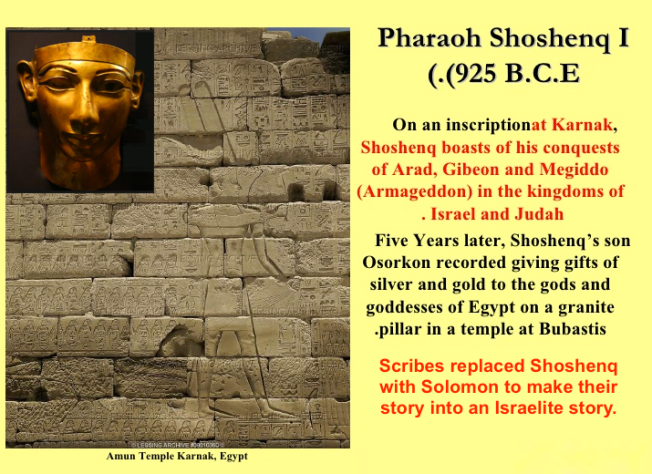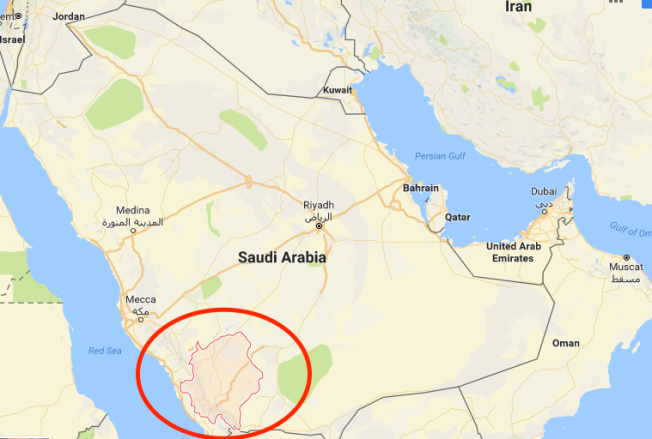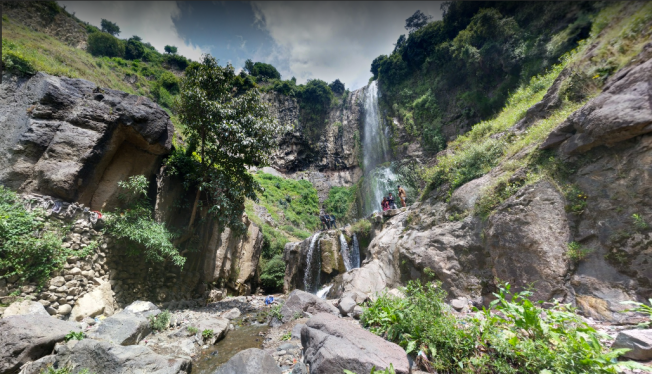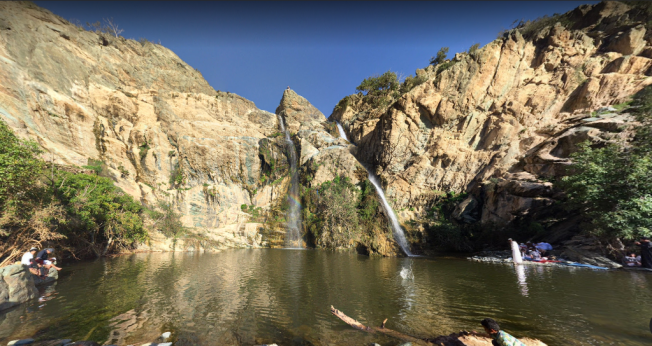SOLOMON = EGYPTIAN PHARAOH SHOSHENQ I & MOST OF THAT GOLD & WEALTH IS IN SWISS-BRITISH ROTHSCHILDS VAULTS! + NO FACTS SUPPORT ISRAELIS EVER PLAYING A ROLE IN EGYPT OR PALESTINE!

Egyptian King (Pharaoh) Shoshenq
3,000-year-old mystery of Biblical king ‘SOLVED’ with $TRILLIONS in treasures
British historian Ralph Ellis after 20 years of research has these findings:
King Solomon = A feared and powerful Egyptian Pharaoh named Shoshenq I (10th Century BCE) not (970 to 931 BC) = He was extremely rich as were his prodigy.
Jewish scribes considered tales of pharaohs ‘unpalatable and unacceptable’ and instead created a ‘purely Israelite’ hero. They purposely put David and Solomon in place of Psusennes (David) and Shoshenq (Solomon) and placed the wealth in Jerusalem instead of Egypt.
Shoshenq had spectacular wealth in royal tombs of Tanis located in Egypt’s Valley of the Kings. A French archaeologist Pierre Montet found signs of incredible wealth at the ruins of Tanis, the capital city of Egyptian pharaoh Shoshenq I. Some remnants of this wealth are Cairo Museum and most of it is in SWISS & ROTHSCHILDS BANKS!
Jerusalem had no SUCH WEALTH = “successive generations of theologians and archaeologists have scoured the Holy Land looking for his capital city, palace, temple and wealth without any success. There comes a point when we either have to accept that the biblical account is entirely fictional, or that we may be looking in the wrong location and for the wrong things.” Solomons mines do not exist.
The filthy rich Kings (Pharaohs) of Egypt simply took their wealth with them first to the Roman Empire and then to the Swiss Bankster Empire with the Swiss and Rothschilds are the richest pharaohs on earth.
—————————-▶
No sign of Israel in ancient Canaan by Dr. Ashraf Ezzat Mar 17, 2012
Click for Source Article by Ashraf Ezzat

Click for For summary and Reviews of the book titled “Egypt knew no Pharaohs nor Israelites”
Egypt is mentioned in the Holy Bible approximately 700 times = So obviously, Egypt must have played a vital role in the history of the Hebrews enslavement prior to the Israelites’ Exodus story.
But Egypt knew no Pharaohs = Takes Egypt out & whole structure of the Israelites’ tale instantly crumbles.
But did that Story ever take place on Egyptian soil or was it more deception.
FACT: Number times Israel or the Israelites mentioned in the ancient Egyptian records = Once in 1208 BC by King Merneptah Stele, son of the great Ramses II was in a military campaign against the Meshwesh Libyans and their Sea People allies, but its final two lines, line 26 & 27, refer to a prior military campaign in Canaan (mistaken by orthodox historians for Palestine) in the Near East. The black granite slab engraved with a description of the victories of king Merneptah, The stele which dates to about 1208 BC was discovered by renowned British archaeologist Flinders Petrie at Thebes in 1896. = A hymn and a list of the Pharaoh’s military victories. A tribe, whom Merenptah had victoriously smitten “I.si.ri.ar?” Or as Petrie mentions Israel reference is very short and says, “Israel is laid waste, its seed is no more.”
First, NON-biblical Egyptian source mention the tribe of Israel once as King Merneptah Stele completely devastated “I.si.ri.ar?” But never said where it was located before it was wiped out. Evidence points to ancient Arabia and North Yemen where the Israelites were depicted with distinctive hieroglyphs as Bedouins/nomads who were always on the move and who never settled in one place or city (ties in with 40 years of wandering). The ancient Egyptian writing, Hieroglyphs, were displayed in 1822 by Jean Francois Champollion.

Asir region of Arabia
Odd Fact = Other defeated Egyptian enemies listed in Merneptah stele = Ashkelon, Gezer and Yanoam were formal cities later inhabited by Pelset/Palestinians. Cities were depicted by “a throw stick plus three mountains designating a foreign country”
The one Hieroglyph referring to Israel instead used the sign for foreign peoples: a throw stick plus a man and a woman over three vertical plural lines. = Egyptian Sign for nomadic tribes (remember Moses said they wondered for 40 years) without a fixed city and were always on the move at the time the stele was created.
Ancient ‘Israeli’ nomads (remember Moses said they wondered for 40 years) were never associated with ancient Palestine + A scarcity of archeological finds corroborate the veracity of the Hebrew bible’s claims. So while modern archeologists don’t deny the Israelites existed, but their story is dramatically different from the bible story.
Dr. Ashraf Ezzat’s new book “Egypt knew no Pharaohs nor Israelites” = Proves that all Israelite stories took place in ancient Arabia and North Yemen = Real homeland of Judaism and not in Palestine as the Bible stories imply.
FACT: Relentless excavations of (so-called) Canaan/Palestine by Israeli and western archeologists from the beginning of the twentieth century only widened the gap between the historical truth as academics know it and the tales of the Hebrew bible.
The Bible places the exodus at around 1200 BC when king Merneptah and his father Ramses II ruled over Egypt, but their documented records record no such Hebrew tale of a “Great Escape” from the Nile valley and no tales of bewitched snakes or parting sea. All we find is his famous stele which bears witness to the devastation of the nomad Hebrew tribe.
FACT: During the New kingdom (1550 – 1077 BC) of Egypt they controlled a great chunk of the Levant in order to secure trade routes and relations with eastern powers. This included Palestine (Israel), Jordan, Lebanon and South Syria under Egyptian rule with fortified military garrisons and castles in place.
The Bible’s exodus tale would be like an American fleeing New York and heading for Boston and all are in US territory like in ancient Egypt Palestine and Levant were under Egyptian managed boundaries so escaping to the Levant is NOT any Exodus from Egyptian military & government controls. The chieftains of the Levant’s tribal communities and leaders of the small cities had to pledge loyalty to the mighty king of Egypt. In return they received his majesty’s protection and support in times of hardships.
FACT: The land occupied by nowadays Palestine, Lebanon and Jordan was never known in any historical documents or referred to as ‘Canaan’.
FACT: Egypt has a unique geographical location and natural barriers = Deserts to the east & west of the Nile River + Mountains to the south + Mediterranean Sea to the north. = Unusual protection from invaders that allowed them to develop a sophisticated and long 3,000 year through antiquity.
An example to the Egyptian hegemony over the Levant / Canaan, particularly during the new kingdom (1570 – 1070 BC), is the valley of Meggido.
TWO MEGIDDO TOWNS
#1 Documented history says Meggido witnessed one of the greatest battles of the Egyptian empire. + Supposedly Megiddo is future Revelations (16:16) biblical city of Armageddon where the end of the world final/mythological battle will be fought.
#2 Another Meggido was an obscure tribal towns located along the ancient Incense trade route that cut across Western Arabian coast.
Both towns depended entirely on Egyptian protection and support and so chieftains/leaders showed unflinching loyalty to the Egyptian monarchy. An ancient Amarna letter was found around 1340 B.C. was found in 1887 in which Biridiya, the chieftain of Meggido addresses the king of Egypt as “my lord, my god and sun” (NOT “PHARAOH”) and is groveling for the help of king Amenhotep IV (Akhenaten, 1350-1334 BC).
Actual quote = “To the king, my Lord and my God and Sun, thus speaks Biridiya, the loyal servant of the king: At the feet of the king, my Lord and my God and Sun, seven times and seven times I prostrate myself….May the king know that since the archers have gone back, Labayu [chieftain of Shechem/ biblical town of Jacob and where Joseph is allegedly buried] carries out acts of hostility against me, and that we cannot shear the wool and that we cannot pass through the gate in the presence of Labayu, since he knows that you have not given (me) archers; and now he intends to take Meggido, but the king will protect his city so that Labayu does not seize her. In truth, the city is destroyed by death as a result of pestilence and disease. Grant me one hundred garrison troops to guard the city, lest Labayu take it. Certainly, Labayu has no another intentions. He tries to destroy Meggido.”
FACT: The biblical city of Meggido was so small and feeble that a militia of 100 men was enough to defend it against a takeover by another tribe.

Asir region of Arabia Watefall

Asir region of Arabia Watefalls #2
Landscape of ancient Canaan in Hebrew Bible is depicted as an attractive site that the God of the Israelites called his Promised land. But Canaan is framed by the sea and desert mountains under Egypt’s control and was the bad lands with some part green plains. The mountain region offered little to those hoping to survive much less find any luxury. In the plains, the cities of central and southern Canaan were all on the ancient highways, on the roads to somewhere else, between Egypt and the Hittites and Mesopotamia.
Archeology reveals that the bible is more likely describing a land (referred to as Canaan in bible) which actually was located in ancient Arabia near North Yemen and southern Arabia called Asir Region, surrounded by deserts but with surprises you would expect in the “Promised Land” and NOT present in Canaan.
FACT: Palestine was under Egyptian rule until the beginning of the first millennia BC with Egyptian administrative centers located in Gaza, Yaffo and Beit She’an that likely included military.
Archeology reveals a strong Egyptian presence in many locations on both sides of the Jordan River (not mentioned in Bible) and apparently unknown to the Hebrew scribes at the time. Archeology reveals that Canaanite cities were not ‘great,’ were not fortified and did not have sky-high walls (as bible claims with the walls of Jericho). The biblical heroism of so-called out classed Israeli “conquerors” is also not fact based.
Remember Merneptah stele was the only Egyptian reference to Israel in 1208 BC.
Other Egyptian kings from the new kingdom (1550 BC – 1069 BC) provided inscriptions (on stele and temple walls) that document their battles in Canaan = King Ramses II famous battle with the Hittites in Kadesh in 1274 BC is one of the earliest documented battles and it made references to major Canaanite/Levantine cities at the time (But NO Biblical towns were ever mentioned in the Kadesh chronicles).
The sea peoples’ invasion of Canaan
1178 BC, King Ramses III defeated the Sea Peoples from the Aegean & the Ionian islands who dared to wage an unprecedented offensive war against Egypt by land and sea. This battle has been described as ‘the first naval battle in history’. The details of the combat are meticulously recorded on the walls of the mortuary temple of king Rameses III at Thebes/Medinet Habu. This was one of the largest and best-preserved temples in Egypt. But eventually, the Sea Peoples, the Peleset/Philistines, eventually settling in Canaan and Palestine some time after his death
The Sea People names on inscribed were:
(Hittites) The wretched chief of Kheta as living captive.
(Amorites) The wretched chief of Amor.
(Tjekker) Chieftain (lit. the Great One) of the foe of Thekel (TAkwrA).
(Sherden) Sherden (SArAdAnA) of the sea.
(Bedouins) Chieftain of the foe of Sha[su].
(Teresh) Teresh (tjwrASA) of the sea.
(Philistines) Chieftain of the Pe[leset].
The Bible portrayed the Philistines – one of the identified seven factions of the belligerent coalition against Ramses III – as the main enemy of the Israelites in the story of David vs. Goliath. Perhaps the Bible is arguing that Israeli nomads were among the group fighting on the side of the invaders in the era 1030-931 BC.
FACT: Well preserved records of Ramses III’s battle in Palestine/Canaan never mention Israeli nomads, but the Philistines were clearly mentioned.
Paradoxically the David & Solomon bible stories happened somewhere else (Arabia & North Yemen).
FACT: Bedouins were not Israelites since Egypt specifically designated them as “Israel” and not Bedouins in Merneptah’s Stele documentation. Also, thirty years later the Egyptian chronicles of a war in Canaan doesn’t mention Israel.
FACTS: Conditions in ancient Palestine were inhospitable for urban settlement or the development of any kingdom. Clearly, no showcase projects such as the Egyptian shrines/temples or the Mesopotamian palaces could have been established there. And Egyptian documents make no mention of the Israelites’ presence in Egyptian cities and never mention the events of the Exodus. Egyptian documents do mention the custom of nomadic shepherds entering Egypt during periods of drought and hunger and camping at the edges of the Nile Delta and such events occurred frequently over thousands of years and were Not exceptional.
QUESTION: Where in the archaeological records of the Israelites that King Merneptah wiped out?
FACT: Prof. Ze’ev Herzog of the Archaeology Faculty at the University of Tel Aviv, asserts that there is no evidence in the archaeological record that Israel was ever a powerful force, whether at the time of the Merneptah stele or at any other point in antiquity.
MIND BLOWING FACTS: Prof. Ze’ev Herzog article, “Deconstructing the Walls of Jericho“, appearing in Ha’aretz (Oct 29, 1999) on his 30+ years’ of excavating the whole land of modern-day Israel (allegedly ancient Canaan) and he shocked the world, including Zionist Israel, with his evidence-based findings = “Following 70 years of intensive excavations in the Land of Israel, archaeologists have found out: The patriarchs’ acts are legendary stories, we did not sojourn in Egypt or make an exodus, and we did not conquer the land. Neither is there any mention of the empire of David and Solomon. Those who take an interest have known these facts for years, but Israel is a stubborn people and doesn’t want to hear about it.
FACT: Ancient Egypt controlled all of Canaan and most of the Levant during the time of the Bible stories. And Egypt mentions one time eliminating Israeli nomads.
In bible Israelites rave about Egypt 700 times = Leads to conclusion the real lands mentioned in the Hebrew bible is NOT in ancient Palestine or Egypt, but in Arabia and Not the Yemen. And there was no exodus from Egypt involving Palestine and the bible’s “Promised land” was in Arabia. There was no fleeing of the Israelites headed by Moses for 40 years from the grip of Egypt’s ruthless Pharaoh.
The Synagogue, the Mosque and of course Hollywood films have engrained the Exodus story into the subconsciousness of the masses. No historical documents support the ‘milieu of that story’ in Egypt and its far-reaching empire. There were only Kings & Queens of Egypt and they left a documented history, but were never called Pharaohs (perhaps another Hollywood creation or simply propaganda).
FACT: Only source of the Exodus from Egypt story is the Hebrew Bible, but even that is in question since, if we examined the Hebrew text the Bible we strangely never find Egypt never mentioned as the site/land of the Exodus story. The distortion took place when the Hebrew/Aramaic stories were translated into Greek back in the third century BC and suddenly Egypt was hijacked and forcibly inserted into the translation, and ironically this took place on Egyptian soil in the legendary library of Alexandria.
What if the Israeli nomads never built the pyramids or ran away on an exodus or Moses never set foot in Egypt and never parted the red sea or David never fought Goliath or what it some of these stories happened in Arabia instead and never involved Egypt or Pharaohs or Palestine?
SUMMARY OF OTHER FINDINGS FROM THE BOOK:
The bible is composed of harsh religious tales of an Arabian Tribe from Southwestern Saudi Arabia and Northern Yemen and discusses inter-tribal wars. The bible is similar to the “Medina” Qur’an in its levels of violence as the so-called “justice” of God (or “injustice”) without mercy but both also show the tenderness and mercy of God. The author proves Arabian tales are the source for both books, an Arabic-Christian history traced to a tribe of Arabians from Southwestern Saudi Arabia and Northern Yemen and so the Bible and Quran are companion works.
It is time for peaceful coexistence and people must expand their knowledge to facts derived by Israeli professors and other archeologists including many Israelis. Today, most Israeli archaeologists agree on the fact that the Biblical Exodus from Egypt does not correspond to historical facts. Most of us found it hard to believe Israelis were slaves in ancient Egypt and broke away and roamed through a desert for forty years when the distance is only 316 miles from Alexandria to Jerusalem and would be like walking part of the Appalachian Trail or walking from the 395 miles from Washington, DC to Boston, MA. How could that take 40 years unless the sun never rose?
SAD FACT: Israelis and Saudis spend so much effort and resources destroying the historical records of temples, sites, libraries, and artifacts, and now we can understand the reasons as the Judeo-Christian history is built on the sands of Arabia. These facts explain why Saudis will not allow researchers into Saudi Arabia to find the remains of an altar in the desert where the Israelites were supposed to have been. They are destroying as much of the evidence in the Middle East as they can with every bomb and leveling of towns & cities to dust to protect their precious stories based on false Arabian tribal tales passed down by mouth and rewritten thousands of times.
FACT: The religions of the Jewish people Torah and the Arab people are just to close not to be one and the same.
Unfortunately, these are NOT convenient facts to induce more BANKSTERS WARS to rob and destroy humanity.
—————————-▶
ADDED FACTS AND OBSERVATIONS:
The bible stories most likely took place in Southern Arabia and North Yemen. The descriptions of landscapes in bible do not match Palestine or Egypt, but rather match a walled fortress in Arabia in the Asir region of Arabia there is a town or village called Misra and it was led by a titular office of Faroan. Plutarch and Herodotus went rough Egypt and there was no mention of Israelites. Had the story take place there, along with the ten plagues the Egyptians would have definitely remembered. Nor was there any mention of Jews or Israelites in the land of Canaan. During the tenth century BC there is no evidence that Jerusalem was capital of any kingdom. Historically Egypt was called gobt or copt and was Not called Misra or Mizraim (Rabbis likely made this mistake on purpose) another name that orientalist used was Kemerovo.
Most of the place names and tribal names in the Bible correspond to paces in Arabia. In 1980’s Professor Kamal Salibi, also noticed a similarity of biblical place names being in Arabia. Unfortunately, the Saudis will NOT allow archaeological digs to take place. It is known that there was once a Jewish Himyarites kingdom in Saudi Arabia and Jews did live a great deal of time in Arabia including Mount Sinai as part of their nomadic wandering.
FACT:
The Babylonians and Assyrians invaded the spice trade routes to keep them open or to rob spices, gold, precious stones, and ivory. But it is unlikely they got as fare as what we call Canaan. This translation fraud started with Septuagint Fragment done by 70 Rabbis. Septuagint Fragment was a (325–350 CE) Greek translation of Hebraic text done by 70 Rabbis (Jewish Greeks and so-called scholars). The end result was called the Greek Old Testament and was sponsored by Ptolemy II and was in circulation among the Alexandrian Jews who were fluent in Koine Greek but not in Hebrew. Egypt was inserted repeatedly into the text by the Rabbis distorting the final chapters. Some sections of the Septuagint may show Semitic languages like Hebrew and Aramaic. Three Rabbi errors include #1 Proven Mistranslations #2 Translations followed what the Rabbis believed or wanted the readers to believe # 3 Rabbis wanted to distinguish their tradition from the newly emerging tradition of Christianity.
The word Pharoah actually meant house in ancient Egyptian. Like house of the King.
—————————-▶
HERE IS A STRONG JEWISH SPIN ON JESUS AND CONSTANTINE TO TRY TO DISCREDIT CHRISTIANITY = IT IS DISGUSTINGLY BIASED!
Biblical scholar Joseph Atwill wrote in “Covert Messiah” = Secret’ of Christianity is New Testament written by first-century Roman aristocrats to control Africans = Shows how and why governments create false histories and false gods to oppress and sedate peoples they want to rule over (social order) “against the best interests of the common people.”
Atwill = “When the Romans had exhausted conventional means of quashing rebellion, they switched to (less expensive) psychological warfare.” = THEY BORROWED BABYLONIAN-JEWISH ideas and created the ‘peaceful’ Messiah “turn the other cheek” pacifism story to avoid more expensive warfare.
Video — The Deception of Constantine = MORE LIKELY A JEWISH TALE TO DISCREDIT CHRISTIANITY
Phone & iPad link: https://drive.google.com/file/d/0B2yuXaVEWeEEOGdmUHdlb1cxTXc/view?usp=sharing
—————————-▶
div{float:left;margin-right:10px;}
div.wpmrec2x div.u > div:nth-child(3n){margin-right:0px;}
]]>
 RSS Feed
RSS Feed















 July 20th, 2017
July 20th, 2017  Awake Goy
Awake Goy  Posted in
Posted in  Tags:
Tags: 













